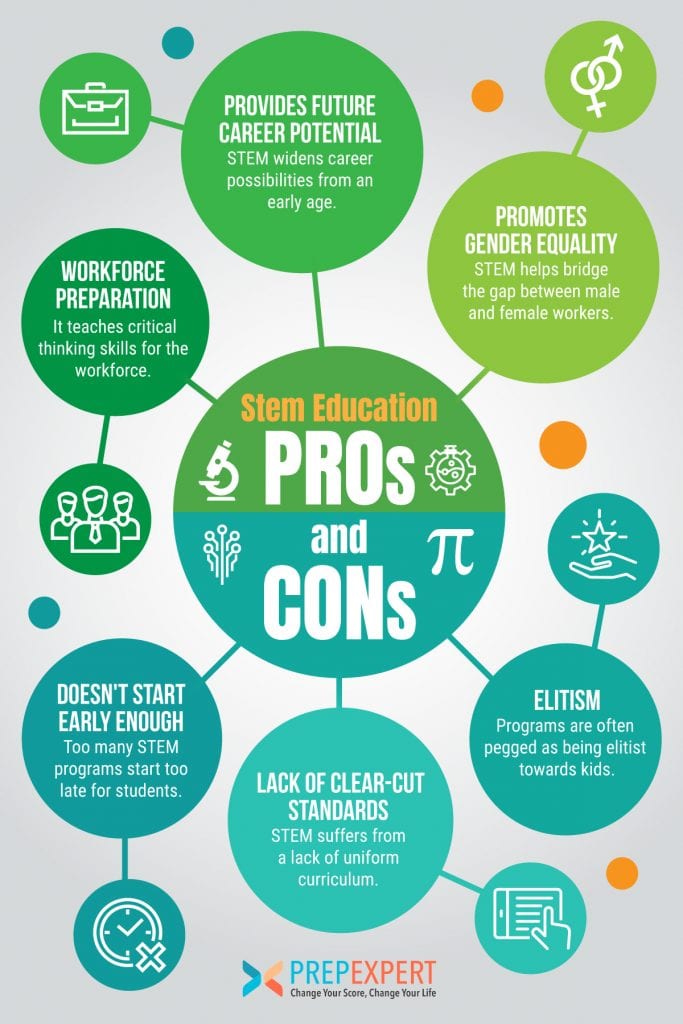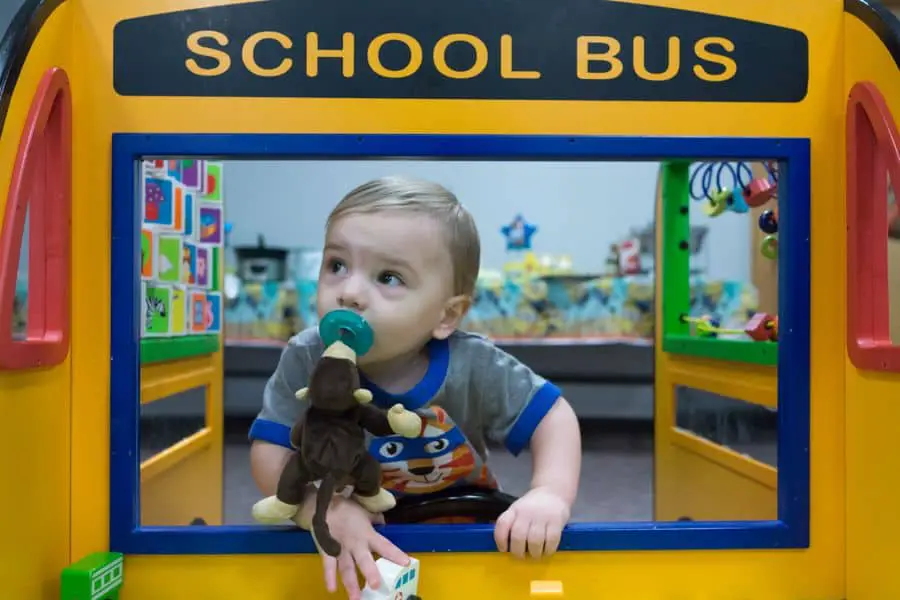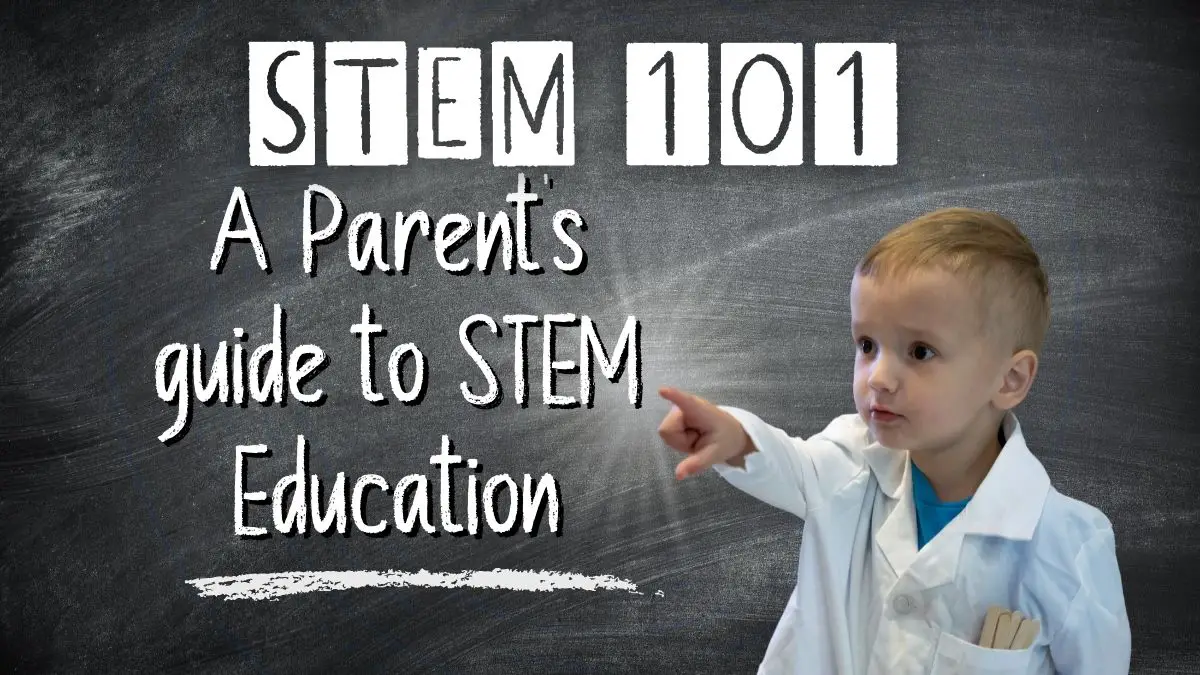There’s a lot of talk about how important it is for our children to learn subjects like science, technology, engineering, and math (STEM). Parents sometimes want their kids to help their kids achieve success in specific professions (scientists, engineers, doctors, etc.) or just be able to start a decent career in an ever changing job market.
But what exactly do these programs offer? And what should you know about STEM programs before enrolling your child?
Many parents don’t realize that STEM education doesn’t just help with college and careers. It also helps kids develop useful life and leadership skills along the way. Let’s discuss why STEM education is important, and how parents can encourage their kids to pursue STEM education.
Why Should I Consider STEM Programs for My Child?
There are many advantages to engaging your child in STEM education. Here are some of the most compelling reasons to consider STEM for your child:
- STEM schools encourage creativity and innovation.
- STEM schools promote critical thinking and problem solving.
- STEM schools emphasize hands-on learning.
- STEM schools teach teamwork and collaboration.
- STEM schools encourage independence and self-reliance.
- STEM schools foster curiosity and interest in science, technology, engineering and mathematics.
- STEM schools prepare students for future career opportunities.
- STEM schools challenge students to become lifelong learners.
These are just scratching the surface. We’ll take a deeper dive into what STEM means and why you may want to get your child involved (or even study STEM topics yourself.)
What is Meant by STEM in Education?
STEM stands for Science, Technology, Engineering, and Mathematics. STEM education is important because it teaches students skills that are needed to succeed in today’s world. These subjects are important because they teach kids practical skills that will benefit them later on in life. For example, learning science teaches kids how to observe and analyze data, while math teaches kids how to solve problems.
- STEM subjects are important because they prepare students for careers in these fields.
- Students who study STEM subjects tend to perform better academically than those who don’t.
- STEM subjects help students become creative thinkers and problem solvers.
- Learning STEM subjects makes kids smarter and more independent.
For a deeper dive on the topic, check out our posts What is STEM in Education and Elements of STEM Education.
What is STEAM and STREAM Education?
If you’re looking at STEM programs, you’ve most likely also come across the terms STEAM and STREAM.
STEAM takes the elements of STEM, and adds Art into the mix. You can read more on the topic in our articles comparing the differences between STEM and STEAM, as well as the importance of Art.
STREAM stretches a bit further and adds Reading (and wRiting) to what STEAM offers.
Are STEM programs worth it?
Discussing the value of anything is a highly subjective topic. It’s a little different for everyone’s situation, preferences, and circumstances. STEM education offers many benefits, though ultimately comes down to career (and life) objectives.
In our article “Is STEM Education Worth It?“ we get into the details of benefits, personal goals, and return on investment.
What are the benefits of STEM?
There are many reasons why STEM education is important. We’ll highlight some of the key benefits. From a jobs and career perspective, here are a few things to consider:
- STEM skills are in high demand.
- STEM jobs pay well.
- STEM careers offer great job security.
- STEM fields are growing faster than any other field.
- STEM schools offer students an opportunity to learn skills that are highly valued in today’s job market.
- STEM schools prepare students for college and career by teaching them to develop critical thinking skills.
Beyond planning for career prospects, STEM also helps with mindset and overall development. There are many reasons why parents should consider sending their children to a STEM school. Here are just a few:
- STEM schools challenge students to use their creativity and imagination to solve problems.
- STEM schools instill confidence in students because they encourage them to take risks and try things they’ve never done before.
- STEM schools foster independence and self-reliance by requiring students to complete projects and assignments on their own.
- STEM schools teach students to be creative problem solvers who can work well both independently and collaboratively.
- STEM programs give kids an early advantage in life.
- STEM skills make students more competitive in college admissions.
- STEM schools give students access to resources and networks that will help them succeed after graduation.
Related Post – Are STEM Students Smarter? Read our article to find out.
What do children gain from STEM activities?
Sure, we know that STEM schools teach kids about science, technology, engineering, and math. How do kids learn through doing STEM activities?
We do lots of STEM challenges and activities here at STEMtropolis. Sure, they’re designed to be fun and help our kids learn. We keep the kids entertained and have a few laughs along the way. The key part is that they have fun while learning. We challenge them to try new things (or sometimes do something familiar with a twist that makes them take a different approach.)
One thing you’ll find once you start doing STEM activities is that you can find something that matches your kid’s learning style. Not everyone digests information or thinks the same way. Since STEM encourages “out of the box” thinking and solutions, you can let kids adapt to what suits them.
STEM students learn how to think critically. Critical thinking is a skill not only valued by employers, but is useful in everyday life. Ultimately we want kids to be able to understand the world around them better and gain confidence in their ability to solve problems whether they are doing an activity at home or a project for school.
Related Post: How to make STEM fun for kids
STEM school vs. Regular school: What’s the difference?
Kids who participate in STEM programs tend to score higher on standardized tests than kids who don’t.
STEM schools are great because they offer hands-on learning experiences and encourage creativity. Students learn through experimentation and problem solving, rather than constant lectures.
What do STEM Schools teach?
STEM programs teach students to be creative problem solvers who understand science, technology, engineering, and math (STEM). They encourage students to develop critical thinking skills and learn to work collaboratively with others.
STEM schools are great places to learn about the world of STEM. But what exactly does this mean? Well, let’s explore some examples focusing on each of the key areas of STEM.
Science: STEM schools teach students to be scientists. Scientists study things like plants, animals, and minerals. They observe them and collect data. Then they analyze the data to find patterns.
Technology: STEM schools teach students about technology like computer programming and coding. Computer programmers write programs that tell computers what to do. They program computers to perform tasks such as taking pictures, playing games, controlling machinery, and more.
Engineering: Engineering principals teach students how to think logically and analytically. They teach students how to break down complex problems into manageable pieces. STEM teaches students how to design and build things. Engineers design buildings, bridges, cars, planes, rockets, and robots. They create blueprints and test prototypes. Much of our world starts with design and engineering, like the mobile phone you’re using or the cup you drank out of earlier today.
Math: When we think of Math, we often think of the various facets like algebra, geometry, trigonometry, calculus, statistics, probability, etc. But Math is more than just calculations and equations. Applied mathematics puts these concepts to test in practical situations – check out some activities that use math in unexpected ways to see what we mean.
STEM is more than just a list of subjects. Some programs simply offer courses in these areas and call it done. When taught correctly, STEM programs blend these concepts together through hands-on learning experiences and collaboration.
Students are taught to solve problems creatively and use scientific methods to answer questions. They’re encouraged to explore different ways to approach problems and to ask questions.
STEM programs prepare students for careers in fields such as science, medicine, engineering, accounting, architecture, programming, and many other areas. Students who attend these schools are more likely to pursue advanced degrees and become leaders in their chosen field. For some examples, check out our STEM Careers list.
Do I Have to Go to College for STEM?
Some college and university curricula focus heavily on STEM concepts, as they are preparing students for careers in specific fields. That said, college isn’t for everyone. You can find STEM careers that do not require a university education or a college degree. Read more in our article Best STEM Careers without a Degree.
Do STEM Schools teach subjects like English or History?
STEM programs focus on the core topics of science, technology, engineering, and math. The STEM variant STREAM aims to round this out and bring in humanities subjects like history and English.
You can read more in our related posts Do STEM Schools Teach English (Language Arts)? and Do STEM Schools Teach History?
Are STEM schools public or private?
You’ll find STEM education in both Public and Private school systems.
Private schools often offer more advanced courses and teachers who specialize in those subjects. However, that focus and expertise comes with a price: private schools can have a hefty tuition. Public schools are usually free, but sometimes struggle with resources and qualified teachers.
If you’re looking for a quality education at a reasonable price, you may consider a charter school that offers STEM. Charter schools are publicly funded but privately operated. They often offer more advanced classes and specialized teachers, so offer elements of both worlds.
Be careful when selecting a charter school. Some charters are not accredited, meaning they aren’t recognized by the board of education. Make sure you understand if your selected school’s curriculum is accredited, and this status meets with your plans.
Are STEM Schools Better?
STEM programs aim to prepare students to think critically and solve problems using a blend of skills. This helps sharpen skills useful in excelling in their chosen career as well as developing useful life skills.
STEM education isn’t for everyone, and what is “best” is a highly subjective topic, and depends on individual goals and objectives. Some folks are more comfortable adding in some arts and humanities with STEAM. Still, others find their bliss in trade or vocational schools.
We take an analytical approach to salary, career growth, as well as personal goals in our post “Is STEM Education Worth It?”
The Pros & Cons of STEM schools
We spend much attention on the benefits and advantages of STEM (and STEAM) education, though would be remiss if we didn’t acknowledge that there is a counterargument.
What are the drawbacks of a STEM education?
The team at PrepExpert prepared a handy infographic on the pros and cons of STEM:

How to overcome the drawbacks of STEM education
Lack of clear guidelines or standards – The way STEM is implemented can be somewhat of a wildcard. Some schools offer individual courses in Math and Science and call it STEM. You now know STEM is more than just siloed subjects, and should demand more out of schools offering STEM programs and education. STEM is a learning process – a blended way of teaching related concepts that focuses on critical thinking, problem solving, and hands on experience. Make sure a potential school’s STEM offerings are an integrated learning curriculum.
Starts too late in life – Yes, this can certainly be an issue, and we advocate the benefits of STEM at an early age. This isn’t an issue with STEM education itself, it’s a matter of adoption and implementation. In some school systems, STEM may not be introduced until later grades. If you’re set on STEM education, you may need to look beyond your local public school program.
Under-performing students can get left out – Again, this isn’t an issue unique to STEM education or its variations. Under performing students are pervasive to the point the US Department of Education issued acts such as No Child Left Behind and Every Student Succeeds Act to “close student achievement gaps by providing all children with a fair, equal, and significant opportunity to obtain a high-quality education.”
Some parents worry that kids won’t be able to use their STEM skills outside of school. However, there are plenty of opportunities for STEM skills to be used in real life. Students can apply their STEM skills at home, at work, or while playing sports and games
Can STEM be Taught Remotely?
The global events in 2020 found citizens the world over in quarantines and lockdowns. Businesses and schools needed to pivot and continue while workers and students had to remain at home. Online learning has been a growing industry though, out of necessity, became a more widely practiced and accepted teaching tool.
Though STEM learning often brings students together for group projects and collaboration. Though this can be more challenging than in person learning, there has never been more access to remote learning tools and resources as there are today.
Check out our full post on how STEM education can be delivered through online learning, or brush up on programming skills with some free online coding courses.
Wrap Up – What you need to know about STEM Programs
STEM education is a great option for students who want to pursue careers in fields related to science, technology, engineering, or mathematics. STEM education also has benefits beyond career advancement. STEM programs offer opportunities for students to learn new things and develop their talents.
They also provide students with a wide variety of career options (many with higher than average salaries) when they graduate. STEM schools are not only good for students, but also for parents who want their children to succeed.
Read more about STEM education in our post STEM Education 101: What every Parent Must Know
-
What is STEM in Education?

Spread the loveWhen discussing or reading about education, it’s hard to avoid the topic of STEM. We’re not talking about plant or valve parts in this context. So, what does STEM mean, especially in reference to STEM in education? What is STEM? STEM is an acronym for Science, Technology, Engineering, and Mathematics, outlining an integrated…
-
Why is STEM Important in Early Childhood Education?

STEM encourages a hands on approach to ‘real life’ problem solving, fostering children’s natural curiosity as they are trying to make sense of their world. Lessons learned and opinions formed in early childhood are often carried through a lifetime. STEM in early childhood education aims to make learning fun.
-
Exciting Examples of Augmented Reality in STEM Education and Beyond

Augmented Reality is making an impact on education, healthcare, industry, & entertainment. Here are examples of Augmented Reality with real world applications.




